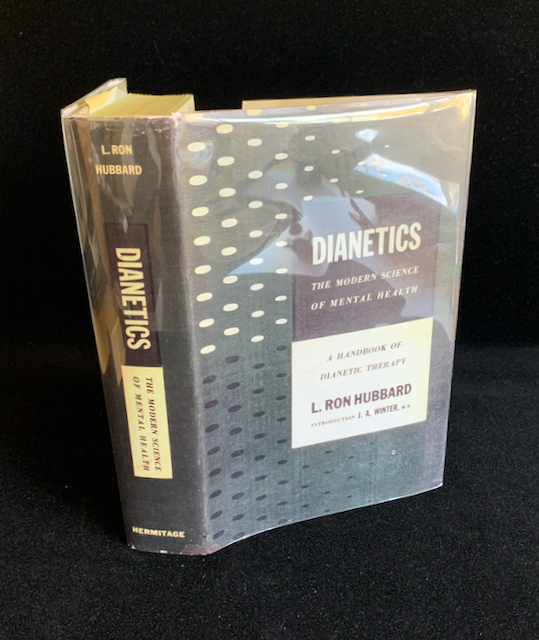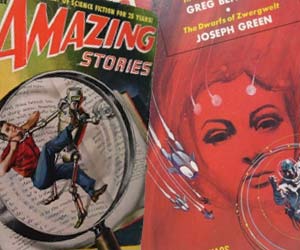7 Easy Facts About Dianetics Described
7 Easy Facts About Dianetics Described
Blog Article
The Greatest Guide To Dianetics
Table of ContentsSome Known Details About Dianetics Facts About Dianetics RevealedDianetics Can Be Fun For AnyoneDianetics for Dummies
As a child, according to his aunts, Ron Hubbard was currently possessed of a fecund creativity, composing games and stories for the enjoyment of the usually conscientious grownups in his globe. From the get go, he had a capability for dream which he was to carry with him throughout his life.Although he produced the large and complex globe of Scientology, in which his fans might shed themselves for several years, he did not wish to be understood his marks. By the early thirties, Hubbard acquired a wife and 2 children (Dianetics). To the horror of his conservative moms and dads, he failed out of college and had no appropriate skills with which to support his young family

The Ultimate Guide To Dianetics
He was a phenomenally quick author, and would work all evening to generate tale after story, retiring at dawn to sleep till early mid-day. No issue how respected his result, he could never ever appear to make adequate cash to support his profligate costs practices. By the mid-forties, his literary output was starting to decline.
However he soon recognized the limitations of his vocation, that he was not going to achieve power and cash by composing penny-a-word pulp adventures. The method to earn money, he began to say to his pals, is to begin a religious beliefs. He as soon as dealt with a group of scientific research fiction writers in New Jacket with the words, "Composing for a dime a word is outrageous.
Rumors stated he was dealing with something new, a book on psychology. In January of 1950, a mysterious ad appeared in Astounding Scientific research Fiction, a pulp publication modified by his buddy, John Campbell, appealing: ... a write-up on the scientific research of the mind, of human thought. It is a completely brand-new science, called Dianetics, and it does precisely what a science of idea ought to do.

Unknown Facts About Dianetics
It is an exploration right into terra incognito, the human mind, that substantial and hitherto unidentified world half an inch back of our foreheads. You are beginning a journey. Treat it as a journey. And may you never ever be the exact same once again. ( 3 ) Early in guide, Hubbard introduced what he called the "clear." Dianetically, the maximum person content is called the "clear." One will certainly hear a lot of that word, both as a noun and a verb, in this volume, so it is well to hang around below first setting forth exactly what can be called a clear, the objective of Dianetic therapy.
These examinations confirm the clear to be entirely without such sickness or aberrations. ( 4 ) The state of Clear, Hubbard guaranteed, was a state of mind never before attained by guy. In truth, upon achieving Clear, an individual would proceed from the state of Homo Sapiens to the new and innovative state of "Homo Novis." Dianetic treatment, called "bookkeeping" (to pay attention), turned out to be an amalgam of Freudian evaluation, in which a reclining individual is motivated to recall previous traumatic experiences; abreactive therapy, in which past occasions are reexperienced by the person with their coming with emotion; General Semantics of Korzybski, in which a person finds out to differentiate in between subconscious experiences; and the psychoanalytic theory of Nandor Fodor, in which the influence of prenatal experiences is discovered.
According to Hubbard, all the events of our lives are stored psychological as "mental image photos," or memories. They are saved, or "filed," in "chains" by comparable web content. A person could have a "headache chain," or a "pain in the right ankle chain," and so on. By routing the individual, called the "preclear" in Dianetics (one directory that is not yet "Clear"), to remember and reexperience the stressful memories on each chain, the possibility of the "somatic" of that chain to "key-in" or become restimulated in today can be erased.
The full documents of all the memories of an individual going back in time is called content the "time track (Dianetics)." Hubbard claimed that when a person was audited to the point that all his subconscious, "reactive" memories were refiled in the "logical" memory banks, then he would certainly achieve the state of Clear and would never ever once more suffer the effects of his reactive mind
Get This Report about Dianetics

By the end of the year, over 150,000 copies of the Dianetics book had been sold. In a glowing article in the New York Times, a reviewer stated dramatically that "background has come to be a race between Dianetics and catastrophe," ( 5 ) echoing a concept usually mentioned by Hubbard. By August, there were even more than 100 trainees signed up for the one month Dianetic auditing program taught at the Structure by Hubbard.
Report this page